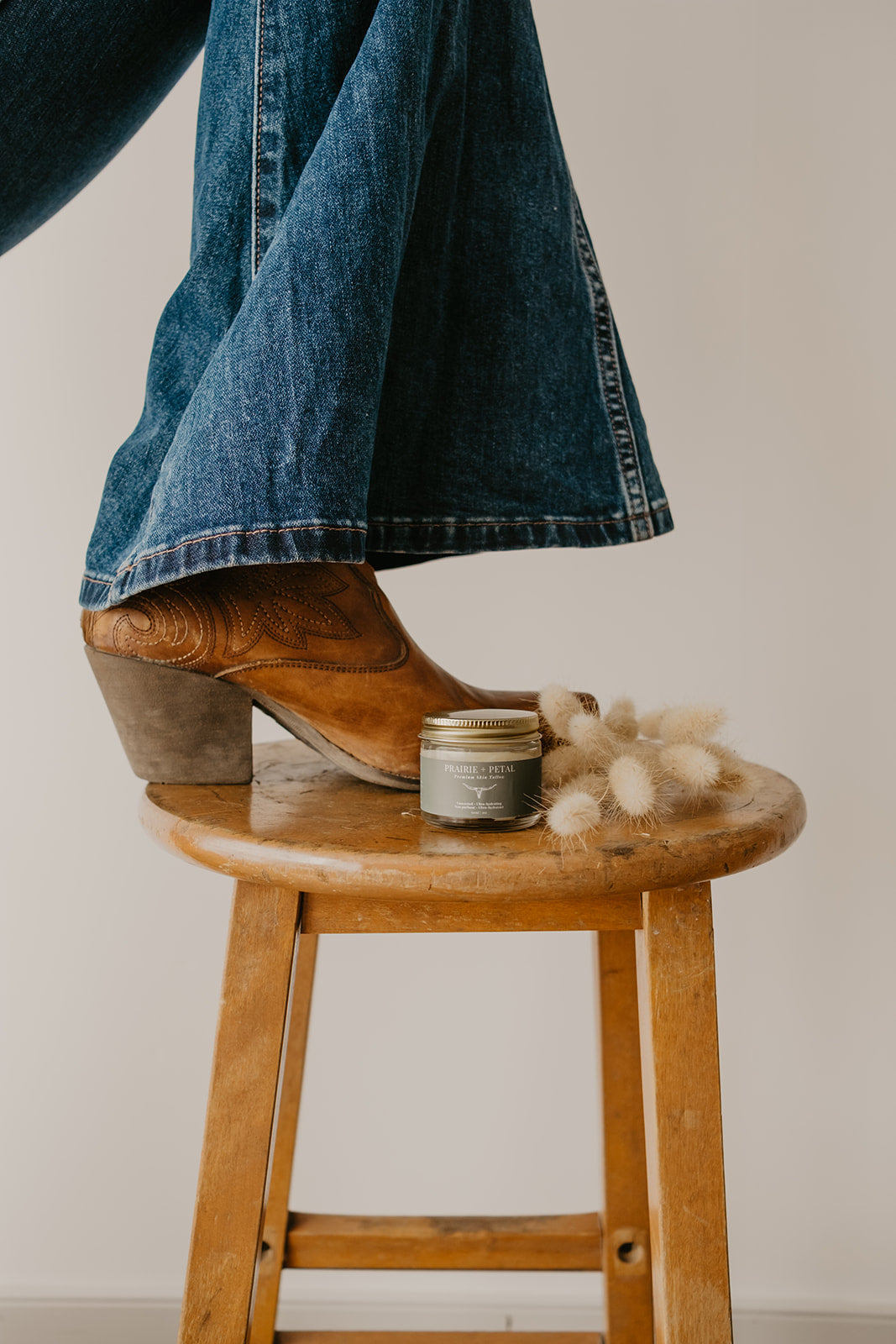
Frequently Asked Questions
Tallow Skin Care
What is tallow exactly?
Tallow is a nutrient-rich fat rendered from beef suet (the fat surrounding the kidneys). Ours is always from grass-fed and grass-finished animals, which means it's packed with vitamins your skin actually knows what to do with—like A, D, E, and K.
Why use tallow on your skin?
Tallow closely mimics our skin’s natural oils, making it ultra-nourishing and easily absorbed. It helps repair the skin barrier, soothe dryness, and promote a healthy glow without clogging pores. Basically: your skin drinks it up.
Is it greasy or heavy?
Not at all! When tallow is properly rendered and blended (like ours), it melts right into the skin. It’s rich, but not greasy—and a little goes a long way.
Does it smell like beef?
Nope. Our tallow is filtered multiple times and blended with high-quality oils like organic jojoba, olive squalane, emu oil and others, depending on your purchase. Some are lightly scented with essential oils, while others are fragrance-free for ultra-sensitive skin.
Is tallow good for acne-prone skin?
Yes! It’s incredibly gentle and helps calm inflammation, making it a great choice for sensitive, eczema-prone, or acne-prone skin types. Always patch test to be safe, but many people find it more soothing than conventional lotions.
How do I use it?
Scoop a tiny amount and massage into clean, damp skin. Use it on your face, hands, belly, baby—wherever needs a little love. It’s especially dreamy after a shower or before bed.
How long does it last?
Since there’s no water added, tallow balm has a naturally long shelf life—around 12 months when stored in a cool, dry place. Just keep fingers clean when scooping!
Do you make it yourself?
Yes! Every jar is handcrafted in small batches with love and intention. We blend tallow with thoughtfully chosen ingredients that nourish your skin and honor the animal it came from.
Is this tallow from your own farm?
Sometimes. We use what we can from our ranch, but we also partner with trusted farmers who raise animals with the same standards we believe in—grass-fed, grass-finished, and raised with care.

Shop Our Tallow Collection
Rich in vitamins and fatty acids that deeply nourish and support the skin's barrier.
Frequently Asked Questions
Flowers & Perennials
Are dahlias perennials?
Yes—but only in zones 8-10. In colder climates (like ours), dahlias need to be dug up and stored over winter. Don’t worry—it’s easier than it sounds, and the blooms are so worth it.
How do I store dahlia tubers over winter?
After the first frost, cut back the stems and dig up the tubers. Gently brush off soil, let them dry, and store them in peat moss or sawdust in a cool, dark space (above freezing). Labeling them will save you guessing next spring!
When do I plant Ranunculus?
Ranunculus are a cool-season flower. In cold climates, start them indoors in late winter and plant out in early spring once the risk of frost has passed. Soak the corms first, then pre-sprout for the best success.
Are ranunculus perennials?
Not really. Most treat them as annuals since they don’t survive harsh winters well. You can dig them up and try storing them like dahlias, but replanting fresh corms each year is usually more reliable.
When do peonies bloom?
Peonies bloom once a year in late spring to early summer—typically late May to early June, depending on the variety and your zone. Their season is short, but magical.
Do peonies bloom their first year?
Usually not. Peonies take time to settle in—often 2–3 years before they bloom fully. But once established, they’ll return every year for decades. They’re the definition of a long-term love story.
When should I plant peonies?
Fall is best! Plant bare roots in well-draining soil with the eyes (buds) no more than 2 inches below the surface. Too deep, and they won’t bloom.
When's the best time to plant irises?
Late summer to early fall is ideal. That gives them time to root in before winter. Make sure the rhizome is just barely covered with soil—they like to breathe.
Do irises bloom more than once a year?
Most irises bloom once in late spring, but some varieties are rebloomers and may flower again in late summer or early fall with the right conditions.
Are all these flowers deer resistant?
Peonies and irises are generally deer-resistant—bonus! Dahlias and ranunculus, unfortunately, are more tempting to nibblers, so consider protection if deer are a problem in your area.
Do you grow these flowers yourself?
Yes! Everything we sell is grown right here at Prairie + Petal with love, patience, and a healthy dose of dirt under our nails. What you see in the shop is what thrives in our zone—no fluff, just honest flowers.

